Photo: Martin Legalize
MAR Fund thanks all our partners whose unwavering support and collaboration have been key in achieving our collective objectives
- In May, the initial workshop for Phase III grantees took place, involving 29 staff members from 12 coastal-marine protected areas with approved project proposals. The event facilitated information exchange, potential collaborations, and provided the necessary tools for effective project implementation. Additionally, participants were trained on MAR Fund’s environmental and social safeguards.
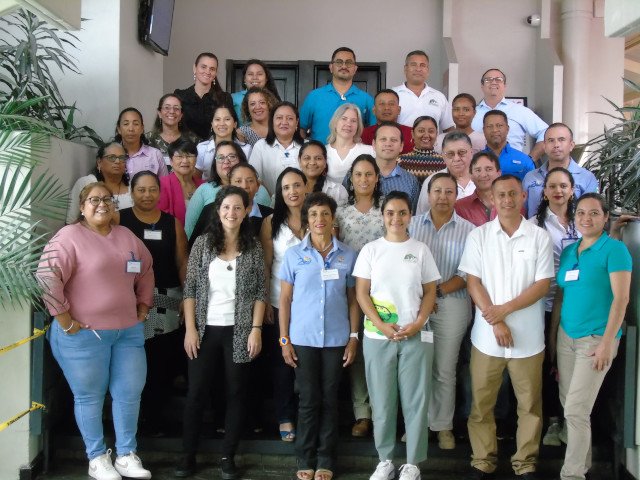
Photo: MAR Fund
- The second call for proposals of Phase III was launched on August 22. Ten of 13 concept notes were invited to submit project proposals in January 2025. This call provided an opportunity for all coastal marine protected areas (CMPAs) within the Mesoamerican Reef System (MAR) to participate.
Objective: To strengthen RedLAC’s operational and financial structure, ensuring its long-term permanence.
Progress to date:
-
At the RedLAC Assembly in St. Lucia, a strategic planning workshop, led by SURECO and partners, updated the network’s business plan, strengthened alliances, and developed a more concrete action plan. Additionally, the Coastal-Marine Learning Community was launched, led by the Conservation Strategy Fund, the Conservation Finance Alliance, and Zamia Media. Nine environmental funds committed to collaborating on a blue agenda focused on conserving coastal-marine ecosystems in Latin America.

Jorge Oviedo, RedLAC president during the launch
of the Coastal-Marine Learning Community
Photo: RedLAC
Guatemala
Objective: To consolidate a participatory national and regional habitat and biodiversity conservation strategy that ensures the sustainability of fisheries, the resilience of coral reef ecosystems, and the governance of Cayman Crown.
Final Results:
- Eleven patrols were carried out in Amatique Bay, Santo Tomás Bay and Cayman Crown, with no illegal activity detected.
- Six environmental education workshops were held with 211 participants.
Three meetings of the Trinational Alliance for the Gulf of Honduras (TRIGOH) were held to address solid waste and illegal fishing. - Forty-four participants from the communities of El Quetzalito and San Francisco del Mar completed a barber/hairdresser course, offering an alternative livelihood.
- A conservation agreement was signed between FUNDAECO and the community of El Quetzalito to build a bungalow for accommodation, creating additional income opportunities beyond fishing.
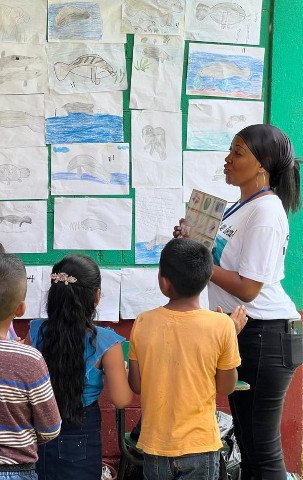
Photo: FUNDAECO
Guatemala
Objective: Conserve and restore 254 hectares of tropical forest and mangrove ecosystem in communities of the Sarstún River watershed, promoting sustainable strategies with the environment, contributing to the resilience of the ecosystems of the Mesoamerican Reef System, through community governance mechanisms.
Final Results:
- Eight files totalling 132.65 hectares were submitted to the State Office for the Control of Territorial Reserve Areas (OCRET) for forest incentives, with five forwarded to the National Forest Institute (INAB).
- Forest incentive payments were made to the communities of Barra Sarstún and San Juan. Families used the funds for fishing equipment, subsistence during fishing bans and children’s education.
- Thirty families from Sarstún Creek received 55 dual-purpose chickens, earning income from each chicken cycle and significantly improving their livelihoods.
-
The bakery and corn nixtamal mill project of the Barra Sarstún Women’s Committee have become valuable income generating initiatives for the community.
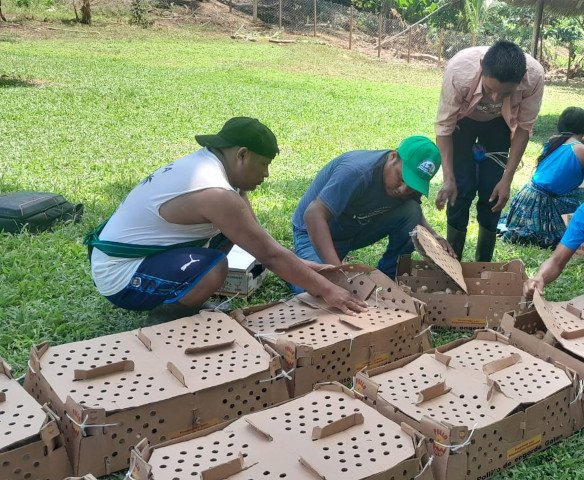
Distribution of dual-purpose chickens in the community of Sarstún Creek.
Photo: EcoLogic
Belize
Objective: To strengthen the financial sustainability of SACD through investments in its Business Arm and the establishment of a River-to-Reef (R2R) academic expedition package, creating direct employment opportunities in the tourism sector for low-income stakeholders and reducing overall community reliance on fishing.
Progress to date:
- In 2023 and 2024, the R2R academic expedition hosted seven groups, increasing the financial sustainability of SACD by reinvesting profits in MPA management activities, including patrolling, infrastructure maintenance and community outreach.
- The R2R expeditions have empowered the community by creating tourism jobs for low-income stakeholders, reducing dependence on fishing and boosting local businesses through spending on services, food, accommodation and transportation.
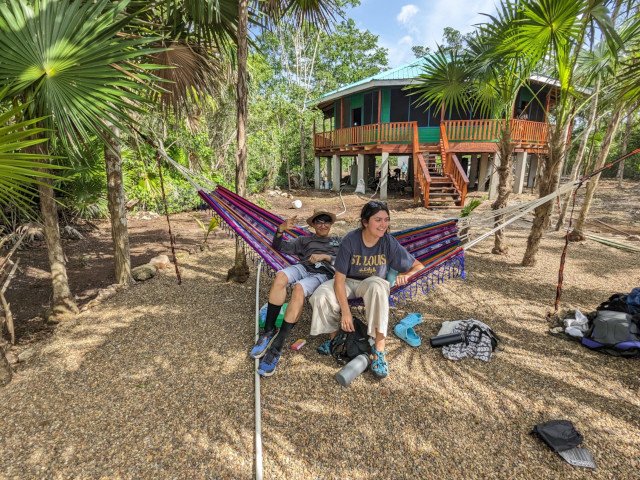
Photo: SACD
Guatemala
Objective: To support the management, conservation, protection, and restoration of natural ecosystems of the MAR and the social development of local communities by strengthening the business model of eight innovative enterprises, improve their impact acumen, and prepare them to access new, better markets and financing opportunities in 12+ months.
Final results:
- The Cozumel Coral Reef Restoration Program received seed funding to purchase diving equipment and hire a part-time assistant, enabling them to expand their operations by offering diving and snorkelling tours, as well as PADI courses, to a larger number of tourists.
- During Bosques&Co – Mares&Co. training program developed by Alterna, two businesses from the MAR region were selected and mentored to incorporate sustainable practices and improve their business model and marketing strategies.
- Videos were created to share success stories of the two MAR businesses: ‘Vive Utila – Utila Naturals’ (IG – FB), and ‘Cozumel Coral Reef Restoration’ (IG – FB).
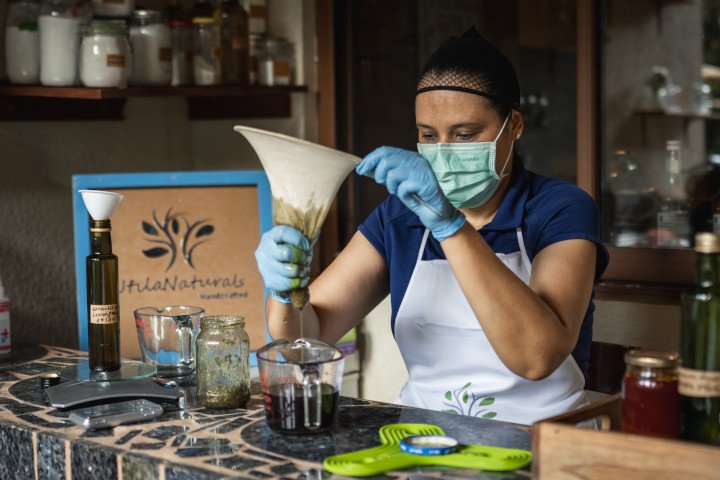
Photo: Asociación Alterna NGO
Guatemala
Objective: By the end of 2025, appropriate governance practices for natural resources, local ventures, and resilience strategies to climate change ensure the protection of 255.85 hectares of tropical forest in the RSMUA and an improvement in the living conditions of the community members.
Progress to date:
- Sixteen farmers were trained in good agroforestry practices and eight agroforestry plots were established with nutritionally important species.
- The Barra Sarstún community hotel was improved with a septic tank, a washing and drying machine and painting materials.
- Training workshops on GPS, drones and Global Forest Watch were attended by 34 people.
- Four women’s groups benefited from their projects: Buena Vista-Tapón Creek earned income from selling chicken eggs; Blue Creek sold their first pig and invested in two more piglets; Lo de En Medio II used chicken products for family consumption; and Sarstún Creek began fattening 20 pigs.
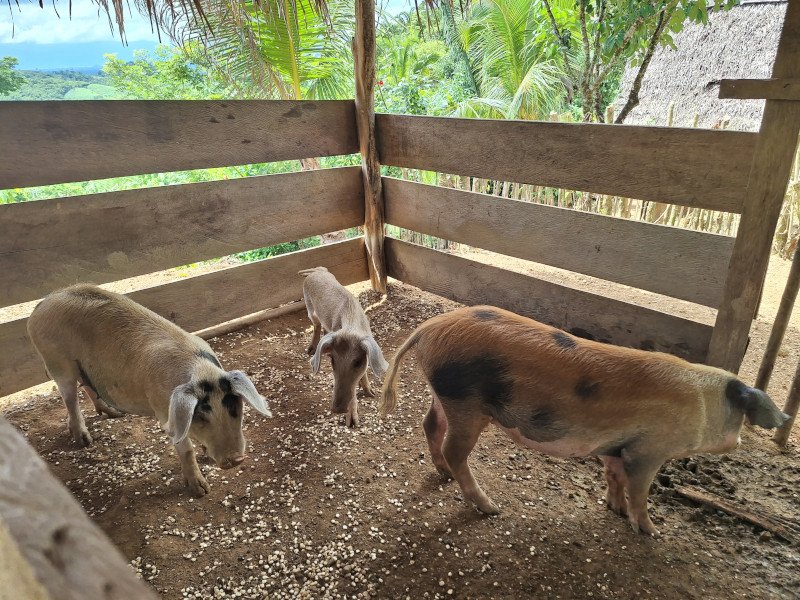
Photo: EcoLogic
Guatemala
Objective: By the end of 2027, natural resource governance practices, environmental sanitation, local entrepreneurship and climate change resilience strategies ensure the protection of 415 hectares of tropical forest in the Rio Sarstún Multiple Use Area (RSMUA) and an improvement in the living conditions of the community members.
Progress to date:
- Fifteen people have been trained in sustainable agricultural practices, equipped with tools for field work, and are establishing new agroforestry plots.
- Sixteen new families are fattening piglets, 22 new families are establishing pig farms (raising piglets for fattening and breeding), and 25 new families are establishing poultry farms.
- Forest incentive management and follow-up will continue to ensure land tenure and the conservation of forests and mangroves within the community.
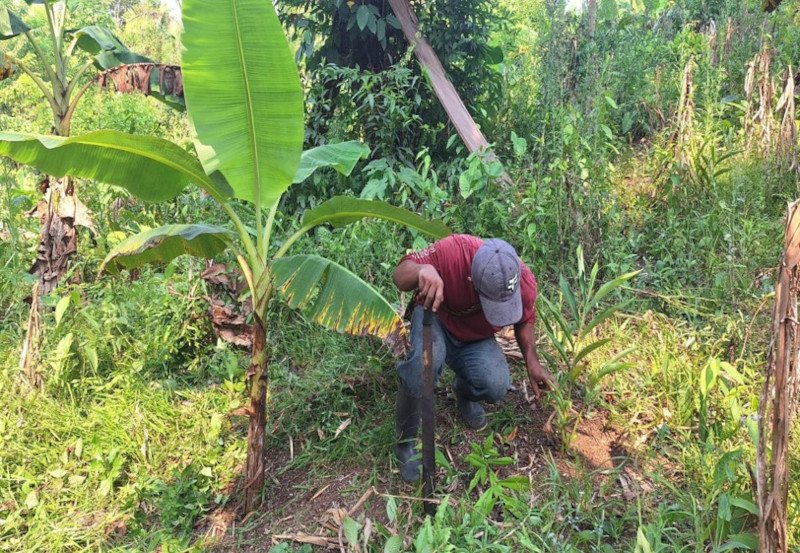
Photo: EcoLogic
Belize
Objective: To enhance the effectiveness of the SACD Natural Resource Management Programme through capacity building, increasing enforcement outputs, and improving monitoring data analysis and interpretation that strengthens CBWS adaptive management strategies, supported by an updated sustainable fishery plan, to sustainably safeguard the natural resources of CBWS for current and future stakeholders of the MPA.
Final results:
- A total of 289 patrols were conducted, resulting in 27 infractions, confiscated gill nets, spearguns, 13 coastal development activities without permits, and four arrests for prohibited gear and species possession.
- SACD has continued their monitoring program to improve data collection, validation, and analysis of Corozal Bay Wildlife Sanctuary species conservation targets. They conducted 23 bird surveys, 36 manatee drone surveys, two manatee aerial surveys, and 84 fish catch assessments. The data indicates a stable species population in CBWS, with signs of increase in bird and fish species.
- A fishing best-practices workshop was conducted for traditional fishers, and two Corozal Bay Advisory Committee meetings were carried out to discuss protected area management and monitoring and enforcement data.

Photo: SACD
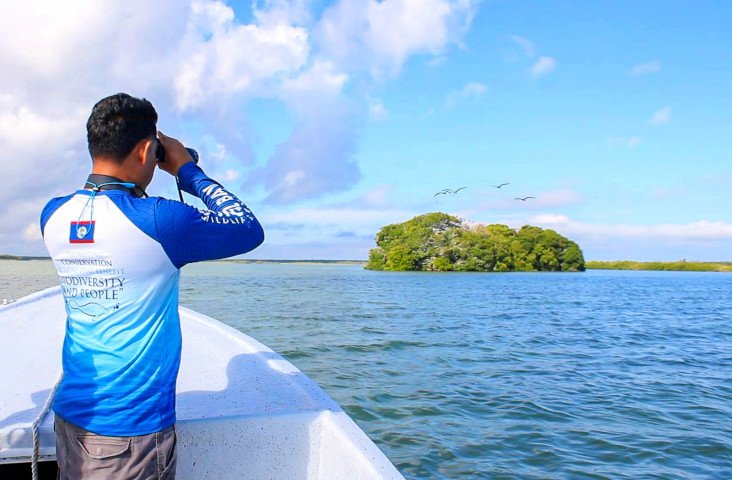
Photo: SACD
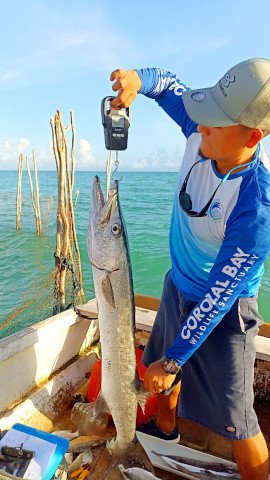
Photo: SACD
BFD
CONAP
SERNA
From May to October, four staff members of BICA were supported to attend the RARE Behavior-Centered Design for Environment training; a fisheries officer from the Belize Fisheries Department to attend the Women Ocean Guardians meeting in Costa Rica; a CONAP member attended the IX Diploma in Ecology, Management, Restoration, Carbon and Legislation of Mangrove Systems in Guatemala; and a representative of the Ministry of Natural Resources and Environment of Honduras (SERNA) attended the Conference of the Parties (COP 16) in Colombia.
CONAP
SACD-BFD
The Punta de Manabique Wildlife Refuge in Guatemala, the Bay Island Marine National Park in Honduras, and the Bacalar Chico and South Water Marine Reserve in Belize were supported with fuel to participate in the ECOME 14 monitoring in September.
Photo: Roatán Marine Park
Belize – Honduras
Objective: Identify sites where spawning aggregations of deep-water fishes occurs, along with the timing of these events using standardized methods. Age validation will determine the age-structure of the spawning populations, and genetic analysis will determine how gene flow and larval transport affect distribution.
Final results:
- Fish Spawning Aggregation (FSA) monitoring has shown that deep-sea snapper and grouper populations are overfished, with smaller cardinal snappers found in the heavily fished waters of Honduras compared to the less fished waters of Belize.
- Blackfin, cardinal, and queen snapper spawn from August to November, while silk snapper spawn in March, May, and July, suggesting the need for a fishing ban from August to November.
- Bomb radiocarbon dating revealed that cardinal snappers can live over 60 years and queen and northern red snappers up to 60 years.
- Ten fishers were trained in biological data collection, sampling and monitoring, while 140 people participated in deep-sea fish conservation outreach activities.
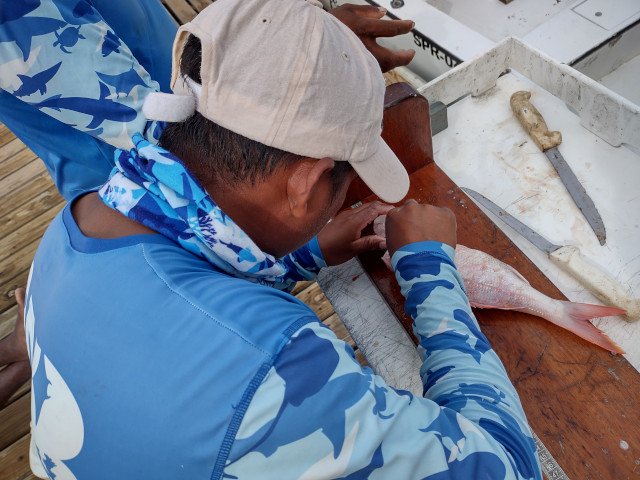
Photo: MarAlliance
Belize
Objective: Characterization of FSA of Cayman Crown and provide initial management for Cayman Crown MPA in Belize.
Progress to date:
- In May, TIDE staff presented key project outcomes at a regional workshop in Guatemala.
- From May and September, 122 enforcement patrols with the Belize Coast Guard resulted in five violations, four verbal warnings, and confiscation of fishing gear.
- In June, TIDE completed FSA monitoring for 2023-2024 FSA at Cayman Crown and SCMR, identifying 28 fish species and courtship behaviors in groupers, although no spawning was observed.
- In July, five potential seaweed cultivation sites were identified within the SCMR as part of a feasibility study exploring diversification strategies for the area.
- In September, security cameras and upgraded equipment were installed at the Hunting Caye ranger station.
Belize
Objective: Promote the recovery of fisheries in the Mesoamerican Reef region, by strengthening the network of protected spawning aggregation sites of commercial fish, as critical areas in the life cycle of these species. Gladden Spit Silk Cayes Marine Reserve (GSSCMR) has been identified as a key sentinel site in the network of fish spawning aggregation in the Mesoamerican Reef region.
Progress to date:
- The regional FSA training (May 23–26) trained 13 participants (captains and divers) from Belize and Honduras on FSA importance, monitoring, and boat safety.
- The 2023-2024 FSA season at Gladden Spit Silk Cayes Marine Reserve concluded in June with 54 dives confirming snapper spawning (March-June) and grouper spawning (December-March) with notable trends in mutton snapper and nassau, black, yellowfin and tiger groupers.
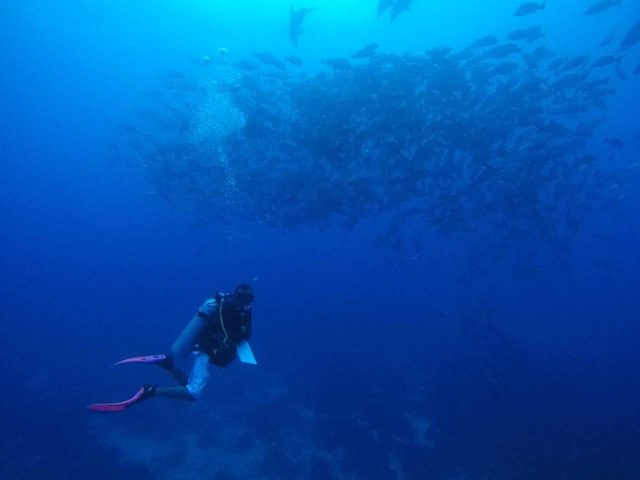
Photo: SEA
- Community researchers conducted fish catch landing surveys (April-June) at Buttonwood Caye to monitor fish populations, track catches, and assess seasonal and annual trends to help assess stock health and detect overfishing.
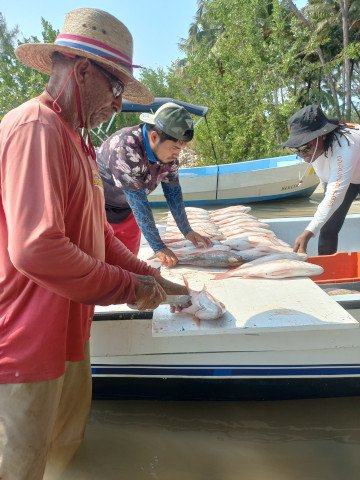
Photo: SEA
Guatemala
Objective: Provide management and zoning recommendations for the Cayman Crown and initial management funding for Cayman Crown with stakeholders in Guatemala.
Progress to date:
- From February to September 2024, 19 patrols inspected 37 boats and confiscated three illegal fishing gear.
- Eight workshops reached 419 participants from five communities on coastal pollution and marine biodiversity.
- Six megafauna monitoring sessions observed sharks, dolphins, rays, turtles and a marlin.
- The Trinational Fisheries Forum advocated for closed seasons, trammel net bans, and enforcement measures. During the forum, fishers shared their experiences with participation in diversification strategies, inspiring others to protect their fisheries and explore alternative livelihoods.
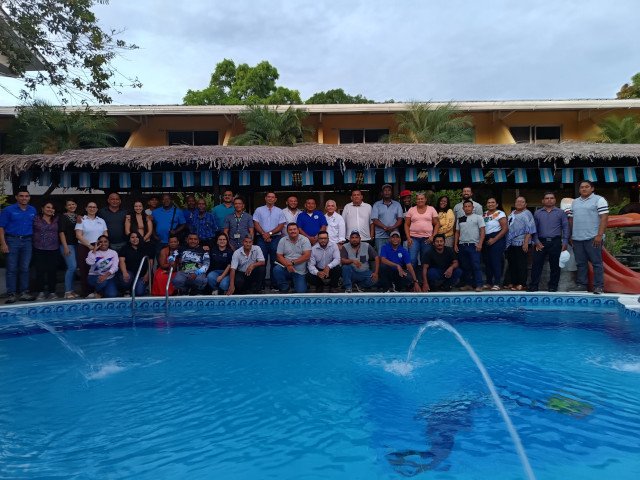
Photo: FUNDAECO
- FUNDAECO, in collaboration with INTECAP and Small Grants, provided 10 short courses for technical capacity building of fishing communities associated with Cayman Crown
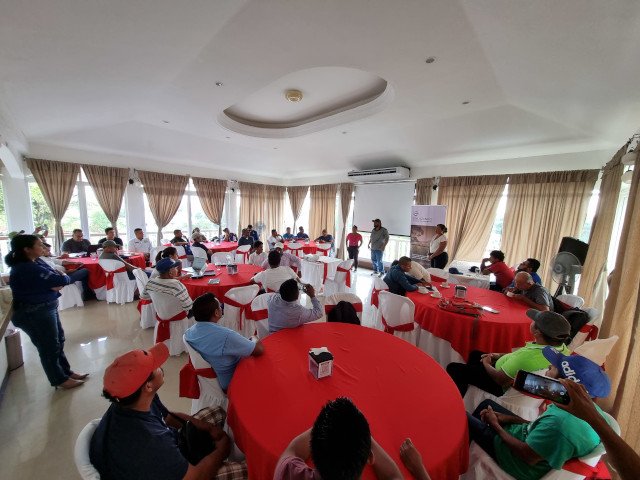
Photo: FUNDAECO
- As part of the Livelihood diversification strategies, conservation agreements with Quetzalito and San Francisco del Mar supported Cayman Crown no-take zones and pilot projects.

Photo: FUNDAECO
- A meeting with the Environment and Natural Resources Commission of the Guatemalan Congress discussed legal measures to protect the Cayman Crown Reef, with 30 participants reviewing Initiative 5819 and future proposals for long-term conservation.
Cayman Crown
Objective: Generate a detailed map of the Cayman Crown area, conduct ecological characterization of coral reef and megafauna, and monitor reef health near or at sentinel sites to communicate results in report cards, Eco Audits, and social media.
Progress to date:
- From 2021 to 2024, 148 sites were studied to provide continuous marine habitat information for the Cayman Crown Reef, including reefs in southern Belize and Guatemala, creating the first habitat map for the region to inform conservation efforts.
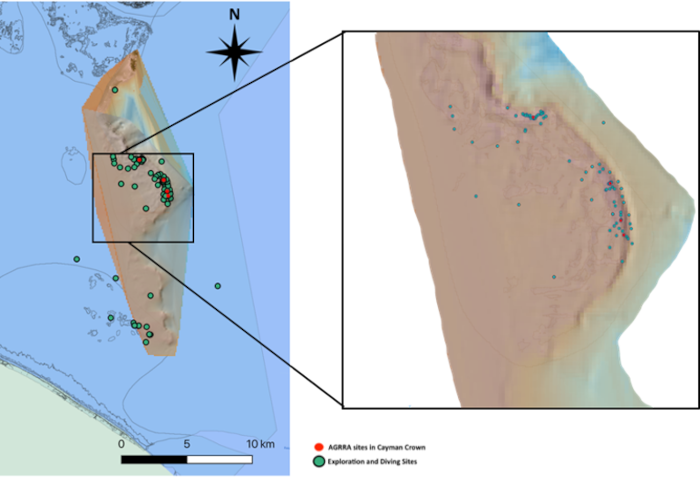
Bathymetric map and close-up of the Cayman Crown reef, focusing on the crown-like formation of the reef, AGRRA, exploration, and diving sites.
Photo: HRHP
- AGRRA’s reef health monitoring at four sites revealed complex trends, with some sites showing improved fish biomass, but coral cover declining due to stress from high temperatures and bleaching events in 2023-2024.
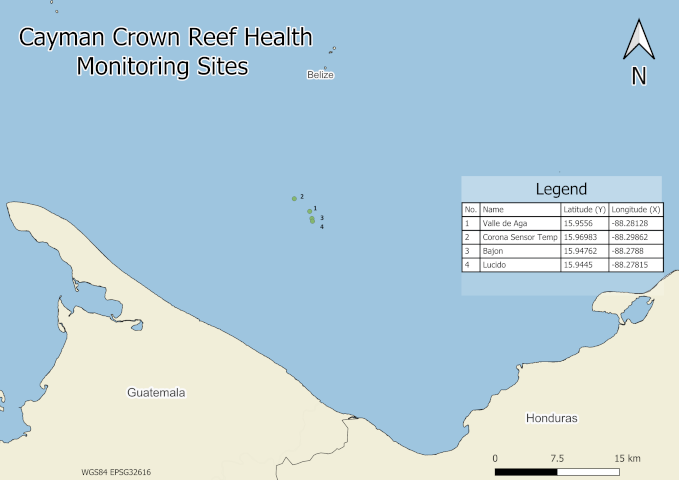
Photo: HRHP
- Long-term monitoring showed that bleaching decreased in 2021-2022, but increased sharply to 76.8% in 2023-2024, with high mortality associated with prolonged thermal stress. These data are critical for understanding the reef’s response to climate change and environmental challenges, and for informing conservation strategies.
- The 2024 Mesoamerican Reef Report Card highlights regional reef health challenges and progress, including the reef near 10 FSA sites in the MAR and Cayman Crown. The results highlight the need for targeted conservation and management efforts to address specific threats to reef health and declining commercial fisheries at each site.

Photo: HRHP
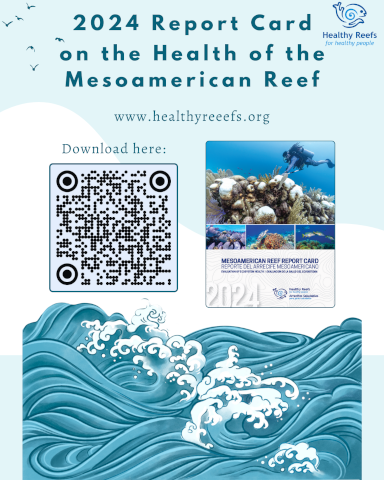
2024 Report Card Now Available for Download.
Photo: HRHP
- HRHP continued to actively champion the significance of sustainable fisheries, marine ecosystems, and Fish Spawning Aggregations (FSAs) through social media channels, videos, and an infographic campaign spotlighting the vital role of FSAs.
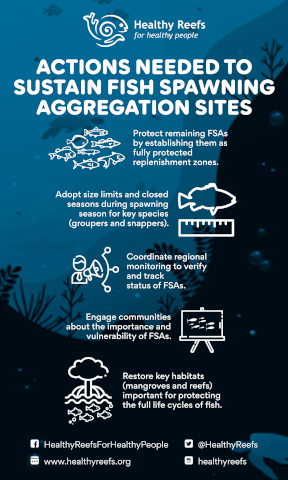
Photo: HRHP
Objective: Digitize the FSA data generated by five organizations (COBI, CORAL, EDF, TIDE, and SEA) covering the period of 2019 to 2024, in the digital platform developed by AGRRA.
Progress to date:
- A total of 482 data records were uploaded to the MAR Fish FSA data platform, each representing one monitoring dive. This added to the 86 records already uploaded by partners, bringing the total number of spawning site surveys digitized in the database to 569. The breakdown includes:
- COBI: 22 censuses
- TIDE: 283 censuses
- SEA: 100 censuses
- EDF: one census
- CORAL: 163 censuses
- This project allows for future analysis of fish aggregation sites in the MAR and is expected to be utilized by all MAR Fish partner organizations that monitor aggregations in the MAR for efficient FSA monitoring data management, ultimately supporting improved fisheries management.
Belize
Objective: To strengthen capacities in the monitoring of Fish Spawning Aggregations (FSA) in Gladden Spit and Silk Cayes Marine Reserve (GSSCMR) and to develop and strengthen internal control measures and organizational policies for the organization.
Progress to date:
- The organization has updated its internal policies and updated its accounting system to QuickBooks online. Three bids for finance department training were received from consultants, and seven laptops were assigned to various staff members.
- Three sets of dive equipment, including a GPS, dive computer, snorkel gear, and first aid were purchased and assigned to research and surveillance staff.
- Open water dive training and coral bleaching data collection training were completed in October with 10 participants, including staff and community researchers.
Photo: Gabriela Ochoa/Fundación Albatros
Objective: Implement cost-effective insurance to cover hurricane risk to the MAR and enhance resilience of the local beneficiaries who depend on the reef for their livelihoods, food security, and protection from coastal hazards.
Progress to date:
- The programme continues to operate in the MAR in 11 sites covered for the period June 2024 – May 2025. MAR Fund continues to work with WTW, ISF and partners in the MAR to expand the programme and design coverage for the 2025/2026 policy year.
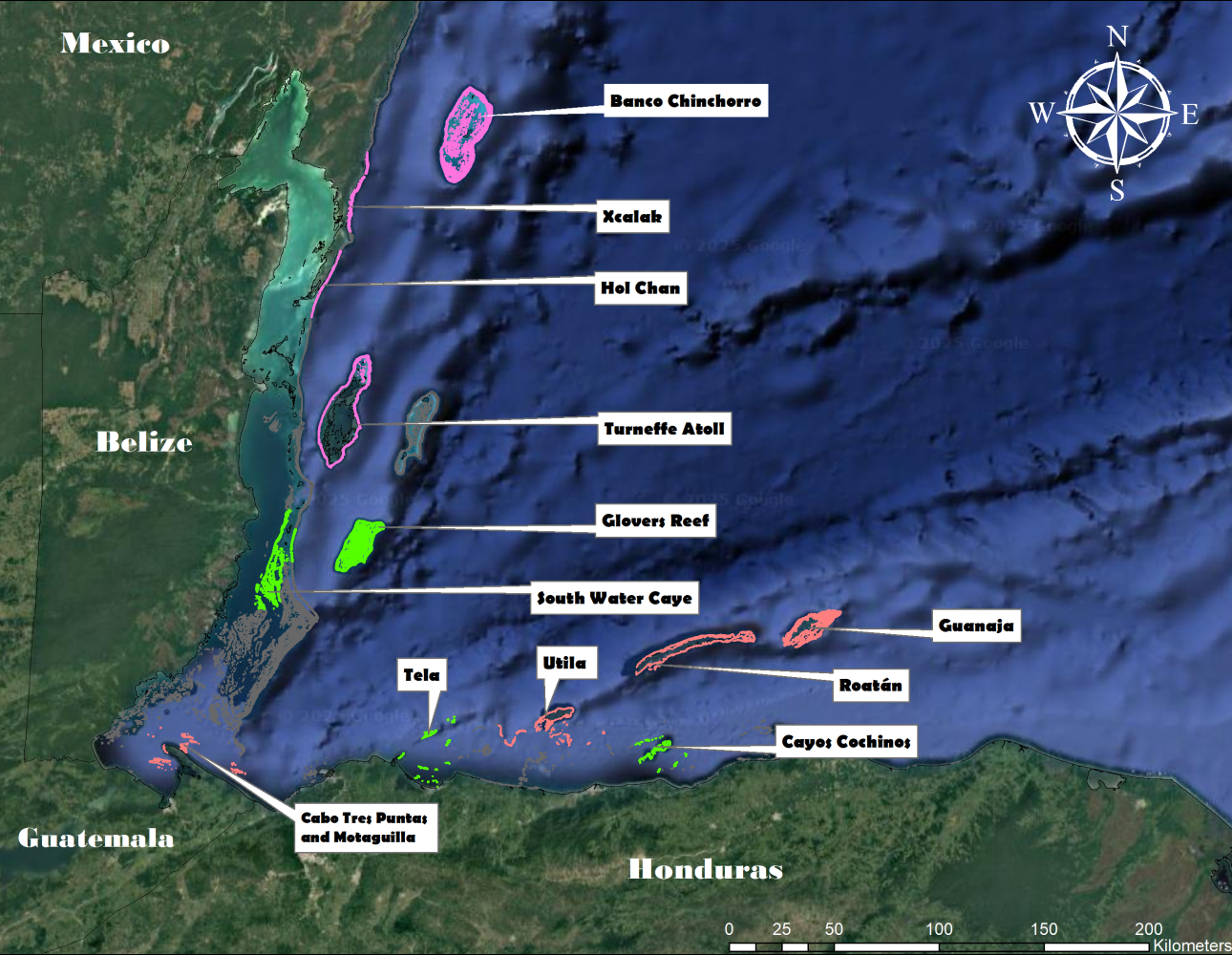
MAR Insurance Programme Coverage
Map: MAR Fund
- In September, during Climate Week in New York, the Ocean Risk and Resilience Action Alliance (ORRAA) held its Annual Member Meeting, where MAR Fund howcased the MAR Insurance Programme. The project’s results and impacts were highlighted at the Fund Advisory Board meeting and two additional panels.
- Also in September, AFCIA-UNDP invited MAR Fund to speak at the Latimpacto Annual Conference, “Impact Minds: Beyond Frontiers” where MAR Fund participated in a panel on “Resilience in Action: Bridging the Finance Gap for Community-Led Initiatives”.
- In October 2024, MAR Fund attended the COP16 in Cali, Colombia, where it participated in two panels: “Climate Risks and Insurance Solutions” and “Insurance for Nature: A Financial and Governance Strategy for Biodiversity Recovery,” sharing insights on the MAR Insurance Program.
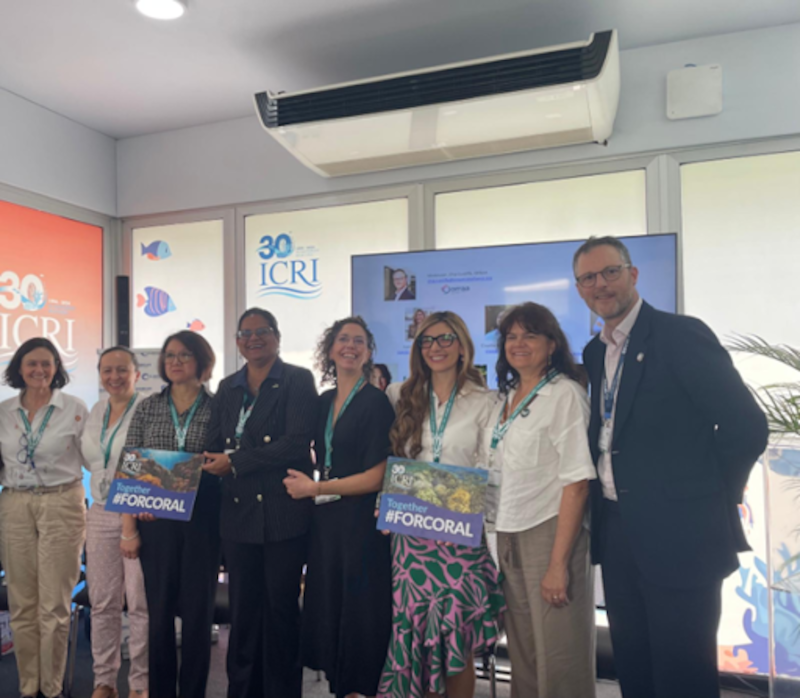
Participation during the COP16 in Cartagena, Colombia
Photo: Claudia Ruiz
Objective: Enhance institutional capacity to mitigate the impacts of hurricanes in coral reefs in the MAR.
Progress to date:
- In May, as part of the “Innovative risk financing approaches to enhance ecosystem resilience along the Caribbean’s coastlines” ORRAA-Canada project, MAR Fund supported Fondo Acción to strengthen reef response capacity in the archipelago of San Andrés and Providencia, Colombia. Two courses were held, one for each island, led by Fondo Acción with the support of four certified trainers from the MAR.
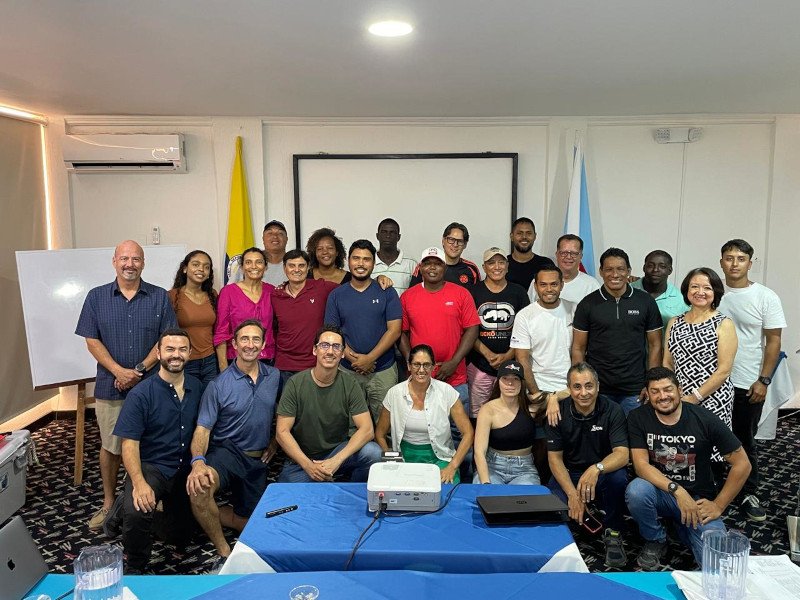
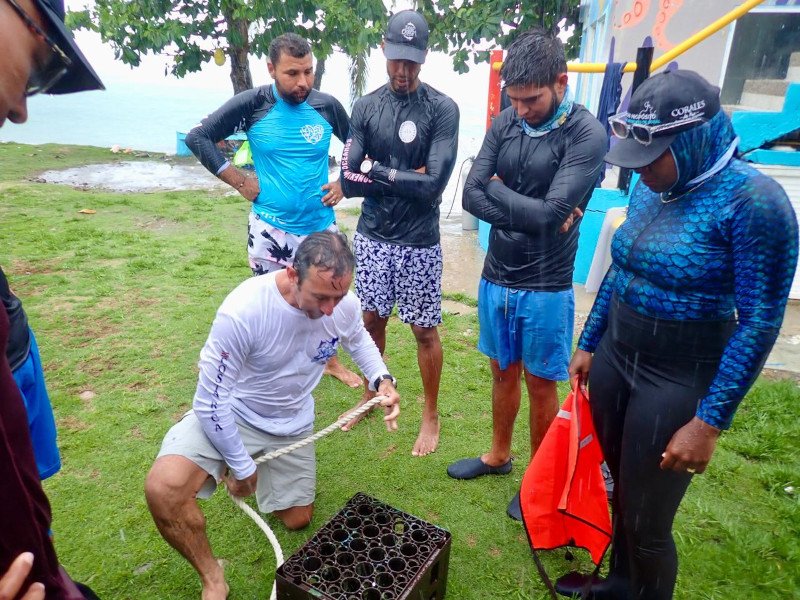
Photos: Juan Carlos Hitron
- In August, Turneffe Atoll Sustainability Association (TASA) led and coordinated another reef brigade for Turneffe Atoll, Belize.
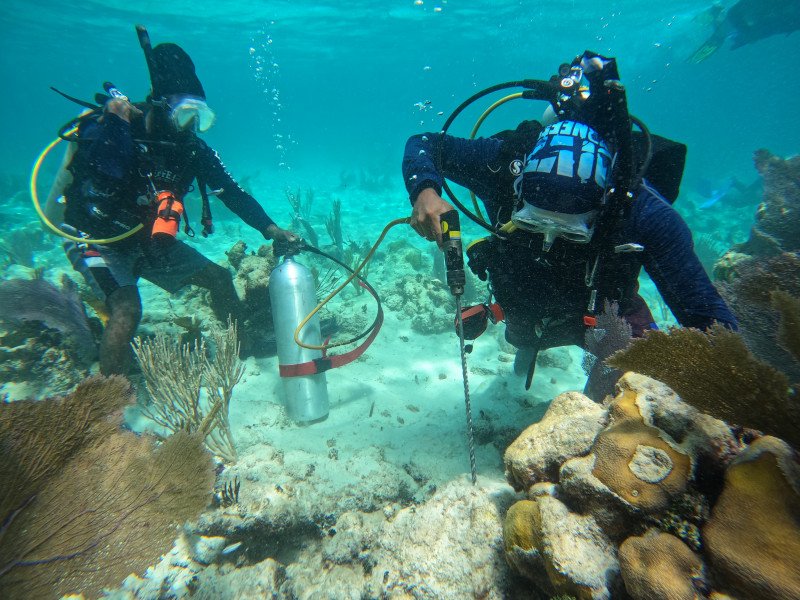
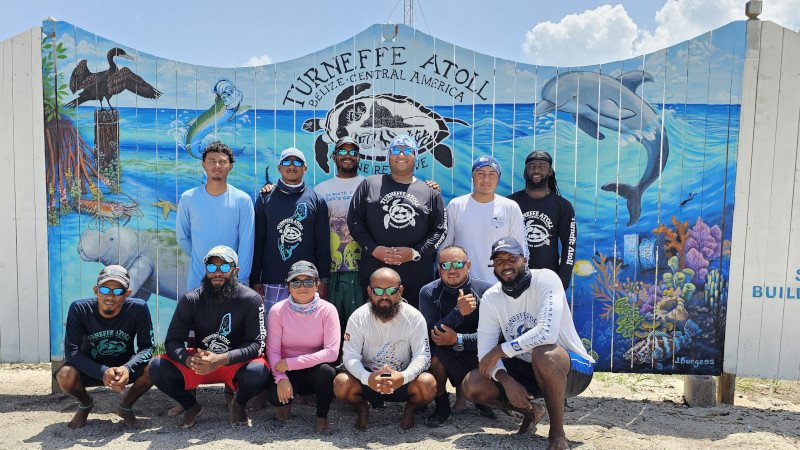
Photos: TASA
- In August, the second Post-Storm Reef Response Trainer of Trainers course for the MAR region was held in Puerto Morelos, Quintana Roo, with 20 participants from the four MAR countries and SAP-Colombia.

Photo: Johnisha Ariola
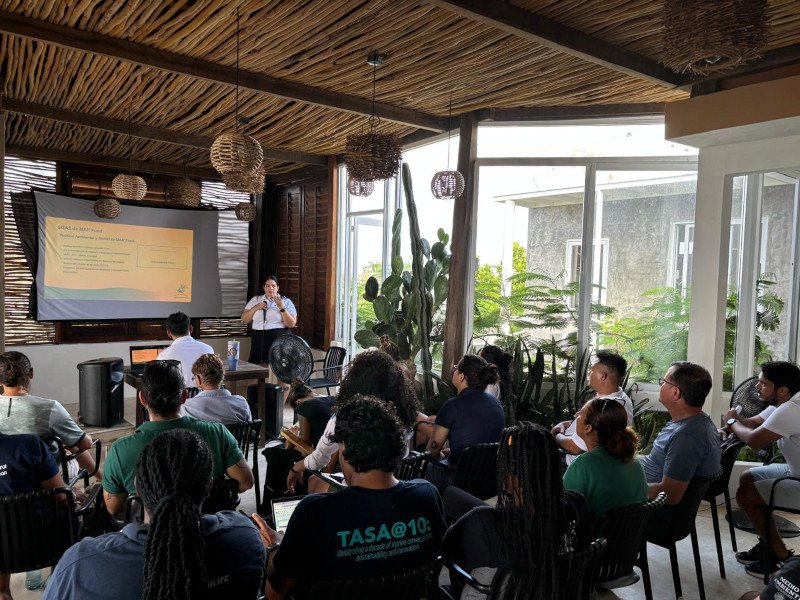
Photo: Juan Carlos Hitron
- A total of 64 participants from The Reef Response Coordinating Committees from the four MAR countries received training through four workshops on the Early Warning and Rapid Response Protocol, insurance mechanism, emergency fund and insurance payout distribution process.
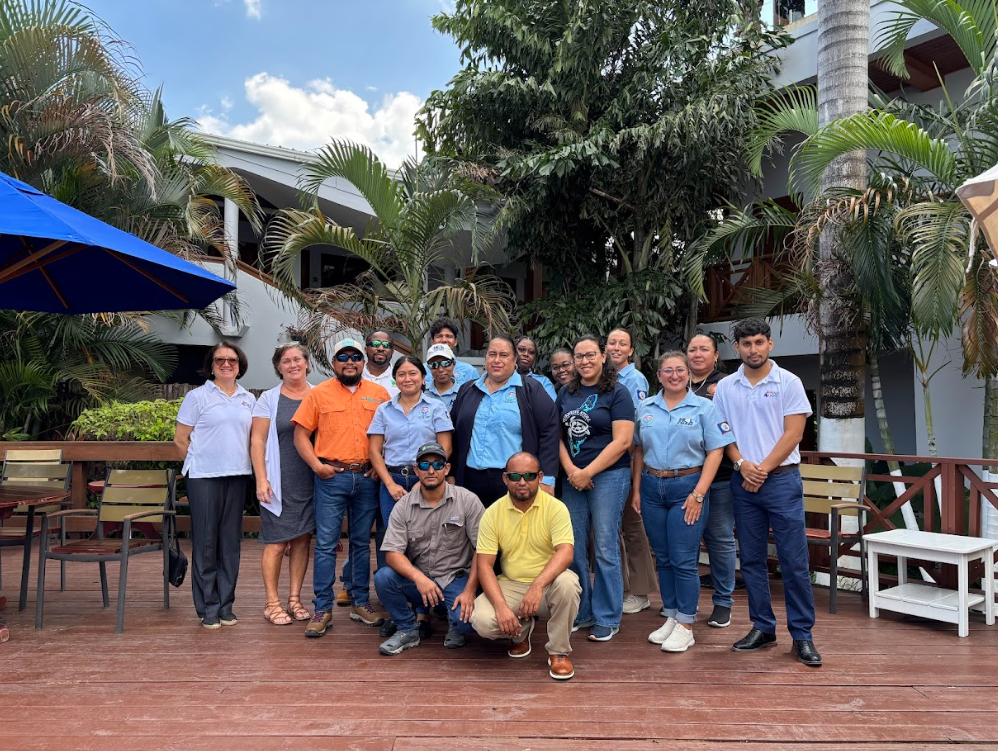
Photo: Andre Herrera
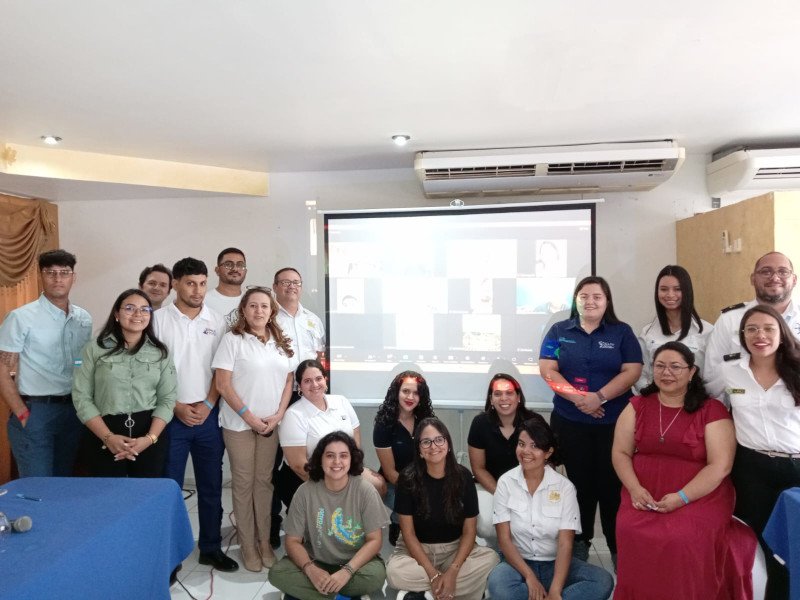
Photo: Claudia Ocaña
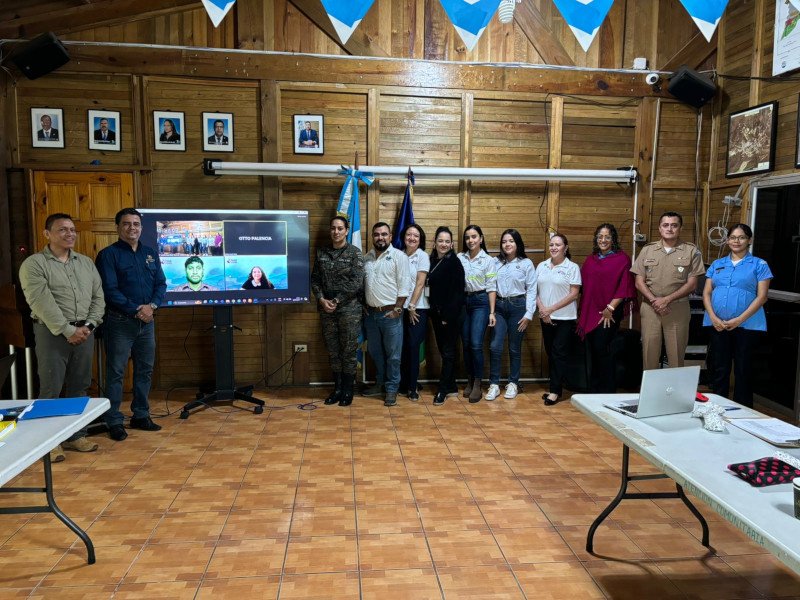
Photo: Claudia Ocaña
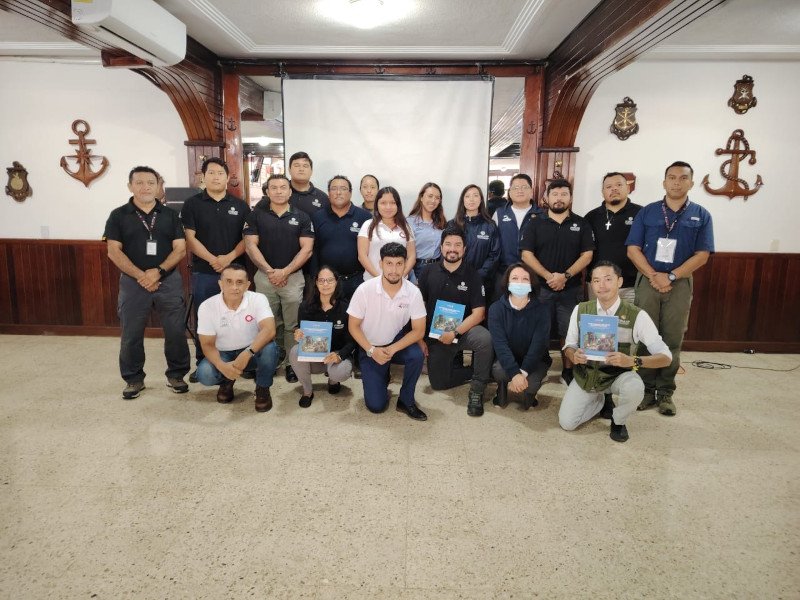
Photo: Claudia Ruiz
Mexico
Objective: By the end of 2023, in synergy with regional and local stakeholders, the resilience of the reef is increased through novel techniques of massive coral repopulation, the efficiency of the restoration is evaluated through systematic monitoring and the organic vinculation of the local community is strengthened under a comprehensive strategy of regenerative tourism to ensure the sustainability of the project.
Final results:
- A total of 42 nursery maintenance campaigns and six planted fragments monitoring campaigns took place.
- Three AGRRA reef monitoring campaigns were carried out at five sites, with one site rated “good,” two “fair,” and two “poor” according to the Reef Health Index.
- In 2024, 75 opportunity fragments were collected and stabilized, contributing to a total of 1,500 fragments, including re-fragmented colonies from the nurseries.
- A total of 1,500 colonies of Acropora cervicornis were outplanted.
- A training workshop on Primary Response to Storms and Hurricanes was held, with the participation of 7 people.
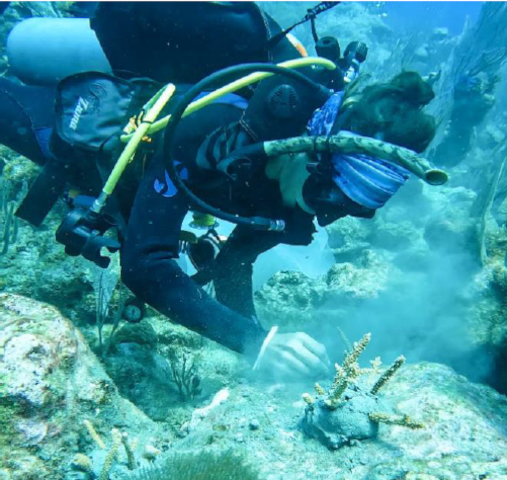
Photo: Baruch Figueroa, CEA
Mexico
Objective: To increase the impact of Oceanus and the Reef Restoration Program to strengthen adaptation and resilience of coral reefs and coastal communities in the Mesoamerican Reef through creating thermal refugia for coral nurseries, promoting rehabilitation of reef sites and habitat for associated fauna, along with environmental education, conservation tourism and a financial sustainability plan that benefits local communities.
Progress to date:
- Oceanus evaluated zones in Cancun, Cozumel, Tulum and Punta Maroma as thermal refugia with high survival rates and resilience to bleaching events for the installation of nurseries.
- Twelve new nurseries were set up, securing 1020 coral fragments, bringing the total to 1779 fragments, including those from previous nurseries that withstood the 2024 bleaching event.
- Two Underwater Explorers workshops were held to teach basic coral reef concepts, restoration programs and techniques, with 100 participants. Oceanus also promoted its Ambassadors for Restoration program to increase local participation in coral reef restoration and conservation. Seven introductory lectures/workshops were developed and attended by over 100 people.
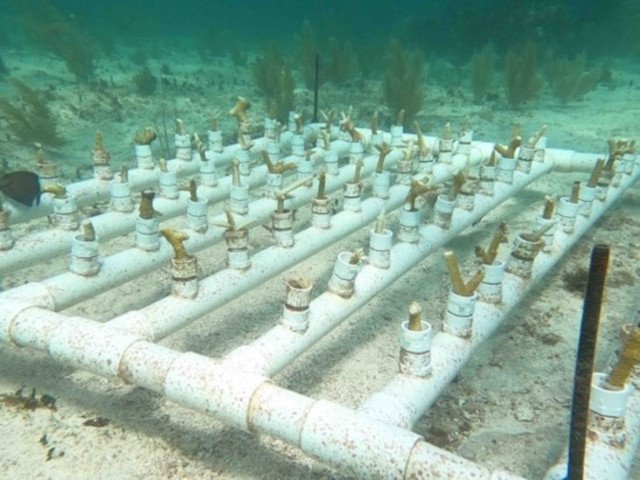
Photo: Oceanus

Photo: Oceanus
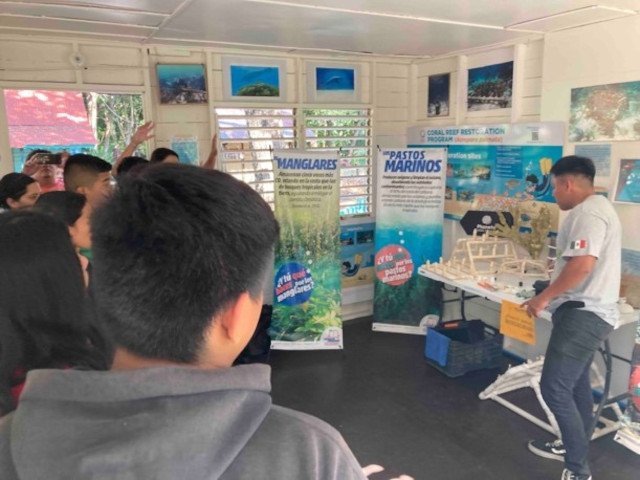
Photo: Oceanus
Photo: Blue Ventures
The Belize Marine Fund (BMF) supports projects through two programmatic windows 1) the Targeted Grants Program and 2) the Small Grants Program. The projects supported by these programs have been guided by those priority areas of focus established in the BMF’s Strategic Plan and in consultation with the BMF Steering Committee.
Objective: To raise national and international awareness, through an original documentary film, of the efforts being undertaken by women leaders from various walks of life to preserve Belize’s Barrier Reef Reserve System and to inspire both local and international audiences to take action to support these efforts.
Final results:
- The world premiere of the documentary “Wealth Untold” was held on Wednesday, November 6, 2024 at the Belize International Film Festival at the Jaguar Auditorium of the University of Belize (Belmopan).
Objective: To re-establish the Gales Point (Manatee) Wildlife Sanctuary through a revised co-management agreement between the local community and the Government of Belize, update a conservation management plan for the area, and train the community in alternate livelihood opportunities.
Final results:
- The Gales Point Wildlife Sanctuary Management Plan draft was submitted to the National Biodiversity Office for approval.
- MARI designed and printed 500 notebooks featuring photos of the Wildlife Sanctuary and its species, with information about the sanctuary and local culture inside. These notebooks were distributed as prizes to Gales Point students at the annual marine conservation summer camp in August 2024 and to adults attending the Gales Point Wildlife Sanctuary Management Plan presentation.
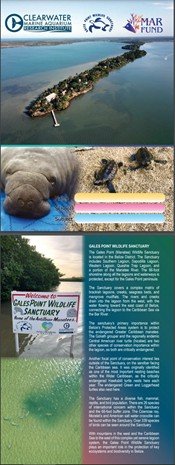
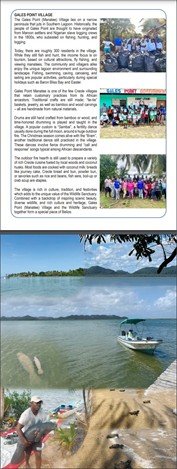
Photo: CMARI
Objective: To implement the Branding, Marketing and Communications Strategy for Belize’s Barrier Reef Reserve System World Heritage Site by carrying out activities that contribute to the effective communication and marketing of the Belize Barrier Reef Reserve System—raising awareness in the general Belizean populace and highlighting its uniqueness and value through social and traditional media as well as engaging international tourists in promoting Belize’s WHS.
Final Results:
Final results:
- The organization enhanced its social media presence highlighting the BBR-WHS, including the creation of a dedicated Instagram page.
- The Ministry of Blue Economy and Disaster Risk Management (MBEDRM) and CZMAI co-hosted a “Blue Economy Gala” to celebrate the BBRRS WHS 10,000th +2nd. Birthday. At the event, held on June 1st at the Old Belize Pavilion in Belize City, recognized and awarded 15 individuals and agencies for their ongoing support and commitment to the protection, sustainable management, and conservation of the Belize Barrier Reef WHS.
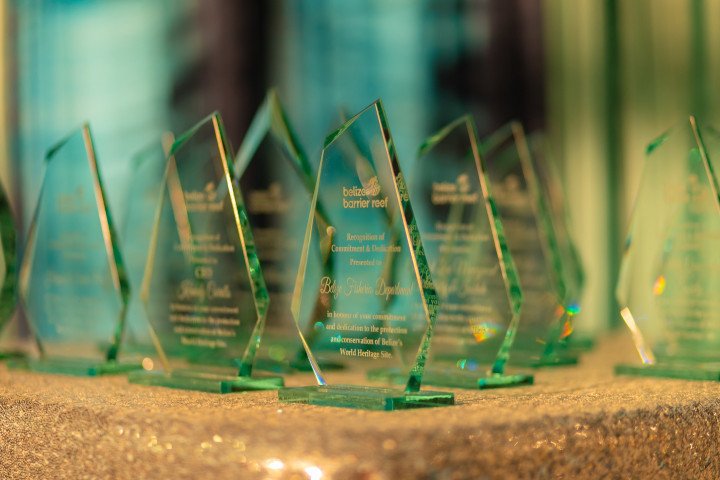
Photo: CZMAI
Objective: To provide core support for UB-ERI’s operations and staff salaries, assisting the Institute to function in its role of building national scientific capacity for the effective management, sustainable use and conservation of Belize’s natural resources. Through the implementation of key components of its Strategy—positioning the Institute as an authority on marine research and marine data science.
Final results:
- This core-cost grant enabled UB-ERI to support the salaries of key marine staff and interns, including a Marine Data Scientist, a Marine Biologist, a Biologist/Public Engagement Officer, and student interns/volunteers at the Institute. The funding allowed them to maintain these staff positions and expand the scope and research during this reporting period.
- The Institute also purchased a much-needed 25-inch Yamaha outboard motor for its research vessel, to support key fieldwork conducted by its marine team.
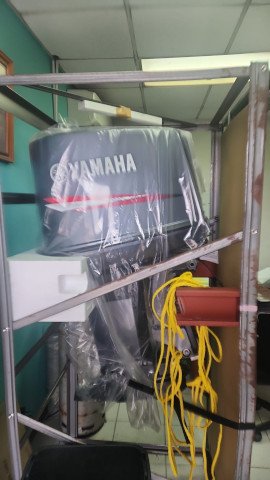
Photo: UB-ERI
Photo: Hannah Morrissette/SI
Honduras
Objective: By 2023, the sources of land-based pollution to the marine environment will have been reduced through the construction of infrastructure that will allow an efficient process at the wastewater treatment plant and to raise awareness with the populations involved in community decision-making and to change the perception of new generations.
Final results:
- The anoxic tank has been fully operational since June 2024.
- Twelve water quality measurements for dissolved oxygen, conductivity, and pH, and nine measurements for Chemical Oxygen Demand (COD), Biochemical Oxygen Demand (BOD), detergents, phosphorus, fats, nitrogen, and fecal coliforms were conducted, all in compliance with national and international standards.
- Improvements in wastewater treatment reduced monthly electricity costs by over 10%.
- Seven water conservation educational sessions were held for 120 children.
- AGRRA monitoring at Mangrove Bright Bay in June 2024, showed a decrease in the Fleshy Macroalgal Index from 5 to 1, likely due to increased temperature and nonpoint pollution sources.
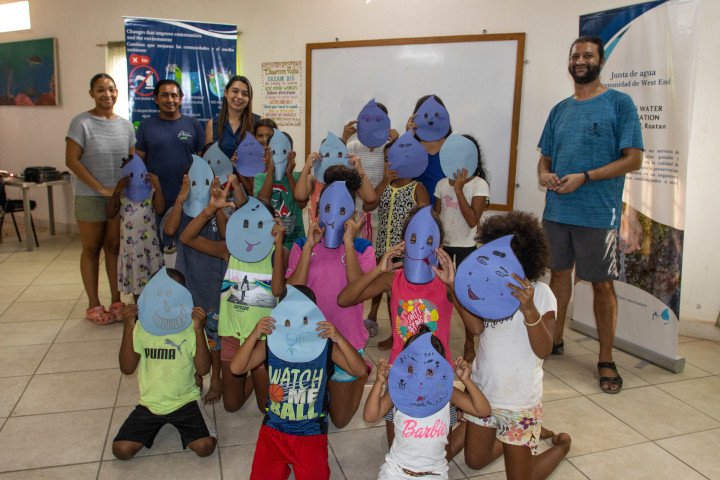
Photo: PWA
Honduras
Objective: To promote improvements in the management and conservation of the ACCMNM reef and the lower watershed of four of its influential rivers, with the involvement of stakeholders in the preparation of a plan that considers the results of water quality monitoring and its relationship with the state of the reef.
Progress to date:
- A second water quality monitoring exercise was conducted at four river mouths and seven reef sites. The results showed that four river mouths and one reef site were rated “very bad,” while four reef sites were rated “inadequate” according to the Coastal and Marine Water Quality Index (ICAM, in Spanish).
- Managers of 10 Environmental Municipal Units (UMAs) from the CCAMNM area of influence met to discuss socio- economic activities and municipal regulations. They suggested monitoring illegal dumping along the riverbanks in Atlántida and developing an environmental diploma program to strengthen the capacity of UMA staff.
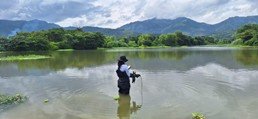
Photo: María Arteaga, Fundación Biosfera
Honduras
Objective: By 2024, the integral management of the handling and final disposal of sludge generated as part of the wastewater treatment has been accomplished, thereby reducing factors affecting the effluent treatment process, allowing the reduction of operating costs and in turn promoting the integration of alternatives for the reuse of sludge which will reduce the sources of soil contamination in the marine national park.
Progress to date:
- The sludge dryer has been fully operational since May 2024.
- Two dry sludge samples were collected from the drying patio, both samples meet EPA standards for metals but exceed the limits for fecal coliforms. Increased sun exposure is recommended to reduce this parameter as the samples were over 80% dry after 22 days in the drying patio.
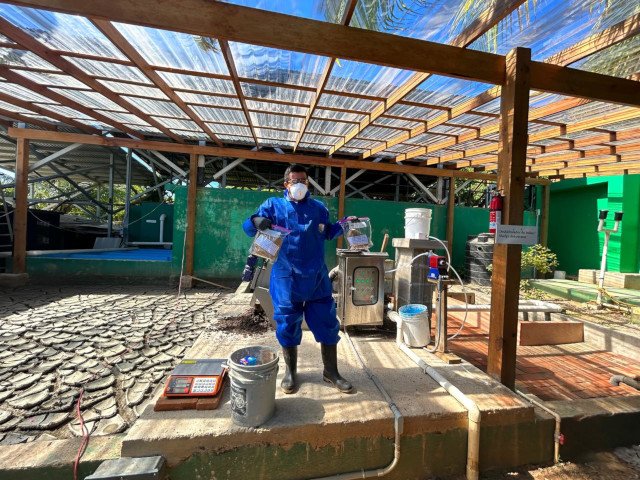
Photo: María Arteaga, Fundación Biosfera
Honduras
Objective: To strengthen the management of drinking water and basic sanitation in the Crawfish Rock community.
Final results:
- The analysis of the drinking water tariff was completed; the results showed that the current tariff encourages irrational use of the service, which the new tariff will avoid.
- Nine bacteriological monitoring surveys were conducted, six for seawater and three for drinking water; the results for seawater samples showed that after cleaning the septic tanks, the Enterococcus level decreased from <10 to <1.
- The drinking water network for Crawfish Rock was designed to improve water distribution and its construction is being supported by ZOLITUR.
- The 20 septic tanks cleaned at Crawfish Rock in 2024 prevented 104,000 gallons of sewage from reaching the reef.
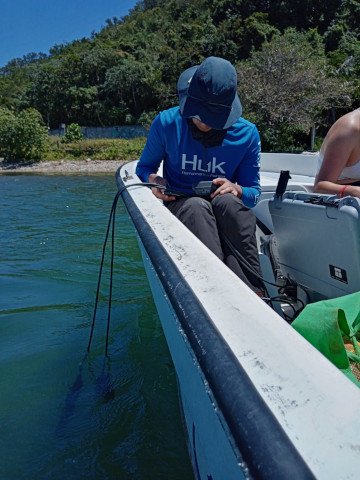
Photo: BICA
Photo: Gabriela Ochoa/Fundación Albatros
MAR+Invest is a blended finance mechanism with strong monitoring and evaluation of impacts, business acceleration and a capacity building program that aims to enable conditions for a sustainable ocean-based economy in the MAR. It will invest in market-based initiatives that make a positive contribution to the health and resilience of the coral reef ecosystems and communities of the Mesoamerican Reef.
MAR+Invest facilitated the first in-person meeting of the LATAM Ocean Capital Collective, now Innovación Azul. This coalition of nine organizations promotes collaboration among Blue Economy stakeholders to develop innovative funding mechanisms for sustainable ocean-based initiatives. The organizations include: Armillaria, Comunidad y Biodiversidad (COBI), Future of Fish, Healthy Reefs for Healthy People, The International Institute for Environmental Development (IIED), New Ventures, Servicios Digitales para la Pesca Sostenible (SEPES), The Nature Conservancy, and MAR Fund. A key outcome was the publication of a concept note, the alliance’s first collective product, outlining next steps that address capital needs of fishers, civil society organizations and entrepreneurs of the MAR, that includes a joint US$ 250k funding appeal.
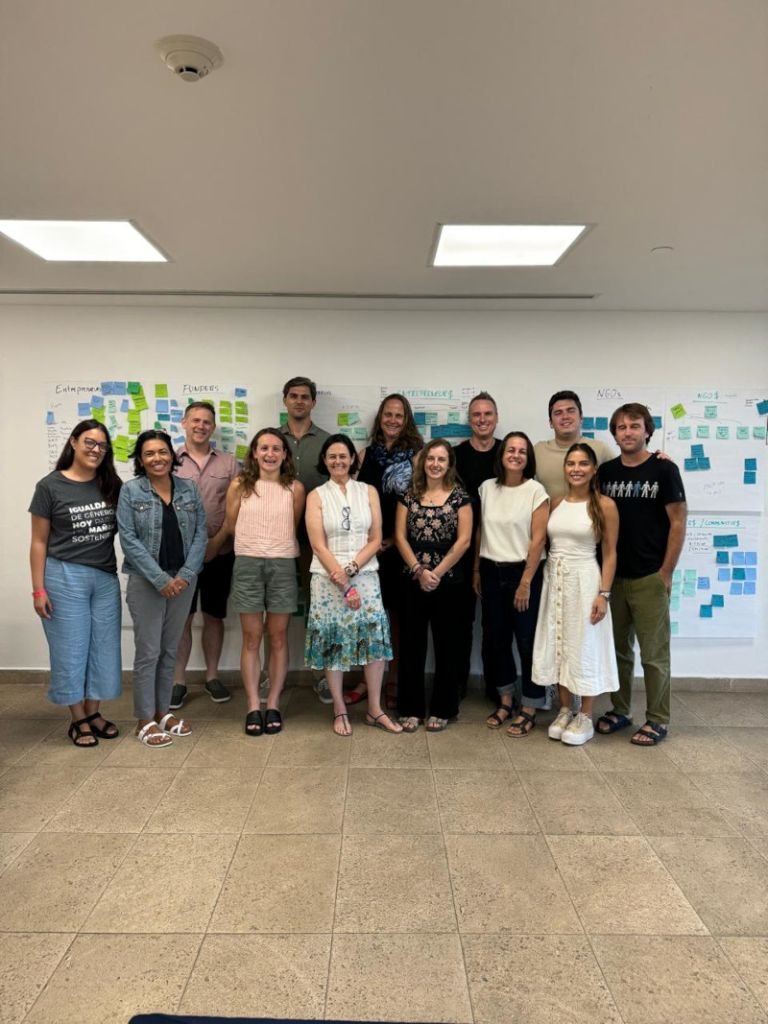
Participants at the first in-person workshop of Innovación Azul, in Playa Del Carmen, Mexico, September 18-19, 2024.
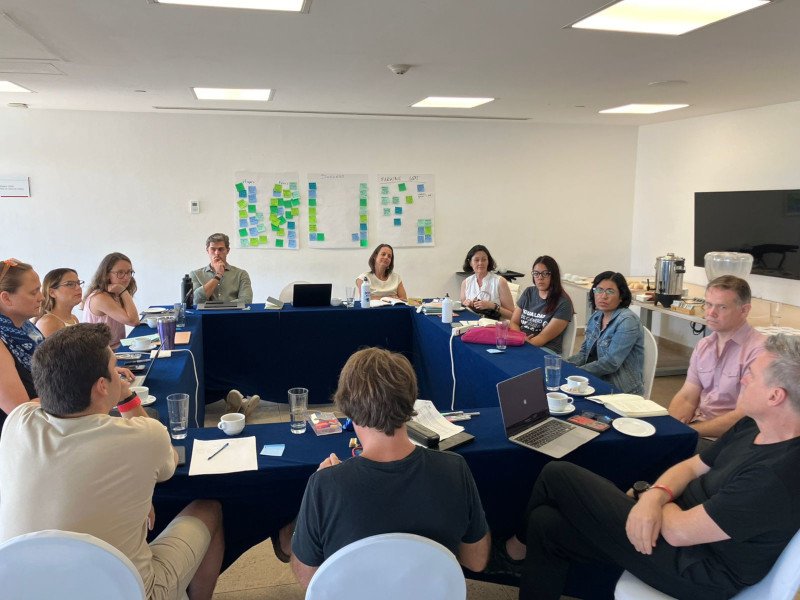
Photo: Amy Jones
MAR+Invest participated in several regional and international events in this period, including several events at COP16 in Cali, Colombia. The events where MAR+Invest was presented were:
- Innovative Blended Finance for Ecosystem Resilience, Case Studies from the Global Fund for Coral Reefs.
- Public-Private Dialogue Series on Financing Nature, Development, and National Biodiversity Strategies and Action Plans (NBSAPs) Delivery (Promoting an enabling environment to mobilize nature-positive private finance for National Biodiversity Strategies and Action Plans, Session focusing on Scaling & De-risking Strategies and Incentives for Private Investment in NBSAP).
- Blended Finance Innovation for Reef Conservation in Latin America & the Caribbean.
- Financial innovation and success stories for biodiversity.
- Win-wins in involving the private sector in conservation.
- GFCR networking reception Forging Coral Reef Resilience: A Now or Never Moment for Action.
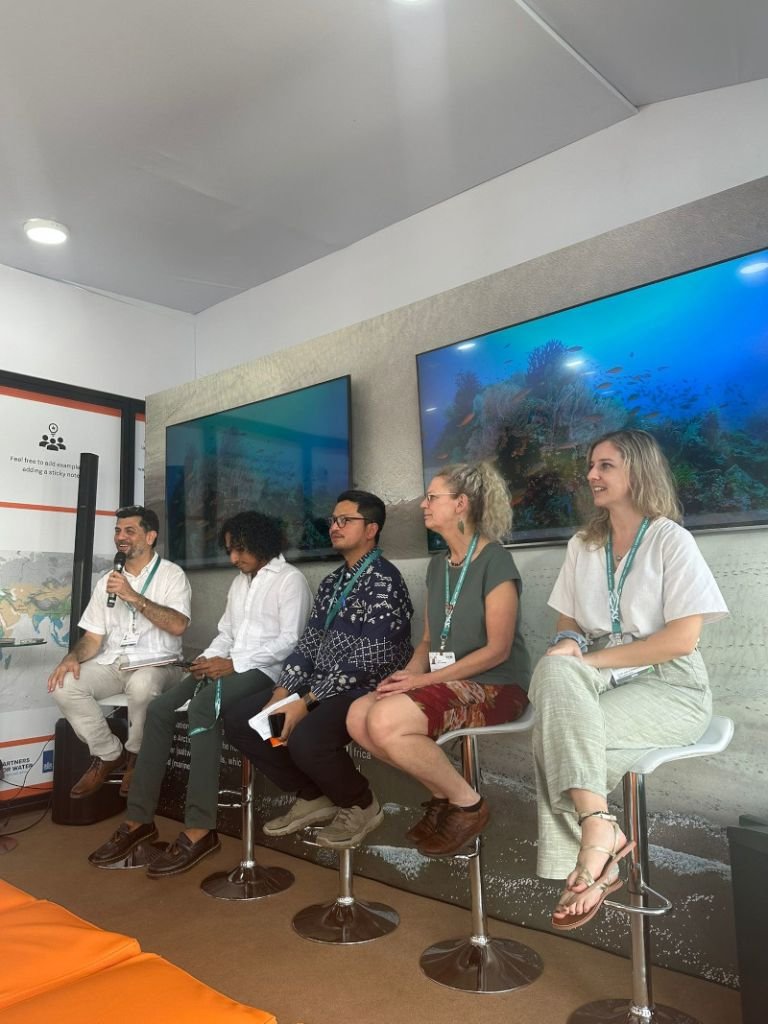
Photo: Carla Lumba
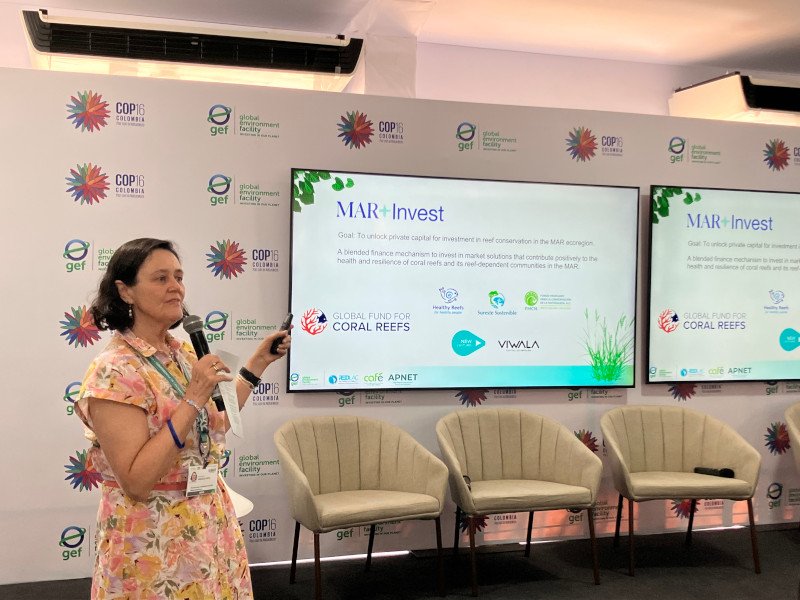
Photo: Amy Jones
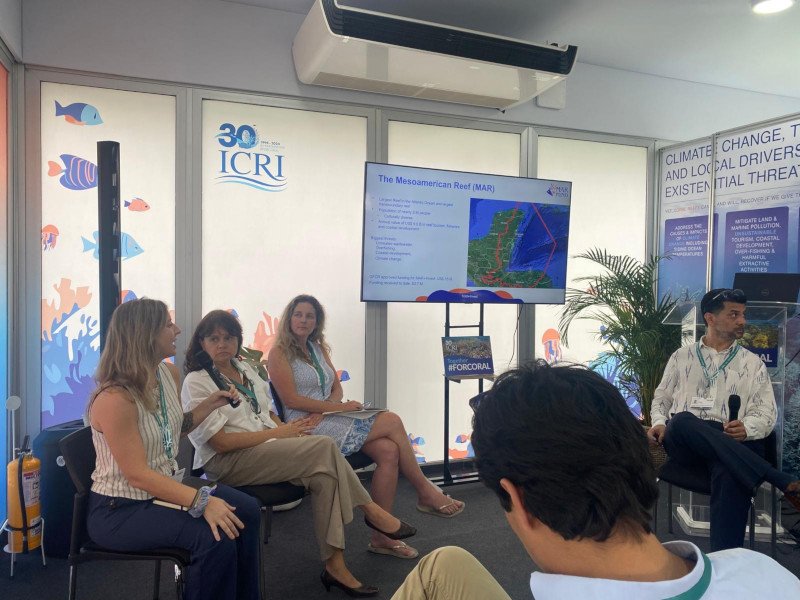
Photo: Claudia Ruiz
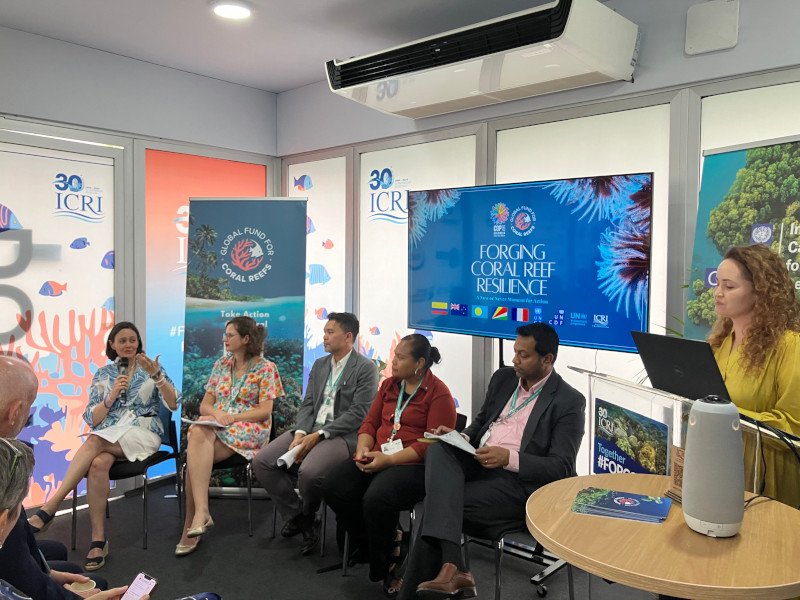
Photo: Amy Jones
Sureste Sostenible, A.C.
Objective: To continue strengthening the leadership skills and networking opportunities of leading projects of the 2023 cohort and design of the 2025 cohort, focusing on addressing barriers to mobilize funding for Nature-based solutions through public policies and decision-makers.
- Five leaders and four projects from the Build & Connect 2023 cohort have been selected to receive additional mentoring to support strengthening of their market initiatives.
- A consultancy team, AMPLO-Kaya, was hired by Sureste Sostenible to identify the gaps and barriers in public policies in the MAR that prevent mobilization of capital to Nature-based Solutions.
- The annual MAR-Leadership Executive Committee meeting was held on September 17, 2024, in Puerto Morelos, Mexico. During this session, alongside presenting program results and internal improvement strategies, efforts were focused on refining the program’s direction for the 2025 cohort of leaders.
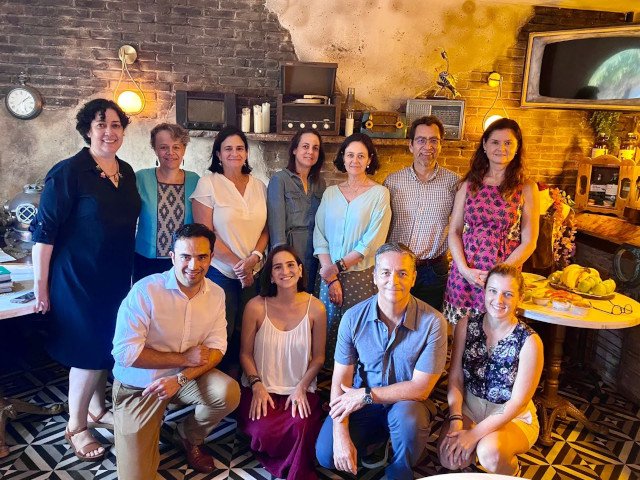
MAR-Leadership Executive Committee Meeting, September 17, 2024, Puerto Morelos.
New Ventures / Viwala
Objective: The Acceleration Programme aims to strengthen early-stage and established reef-positive ventures in business and finance. The initiative aims to accelerate 6-7 projects in each cohort, with six cohorts during the MAR+Invest program.
- New Ventures opened the second call for proposals of the Acceleration programme, from June 6 to July 21, 2024. A total of 104 people registered to the platform and 50 complete application forms were received.
- The MAR+Invest Committee selected seven ventures for the 2024 cohort. The ventures address key issues and threats, including wastewater and solid waste treatment, overfishing, and ecotourism. The seven ventures for this new cohort are:
- Terminator Water Solutions, Mexico
- Polo’s Water Association, Honduras
- Roatan Marine Park, Honduras
- Escuela Itinerante de Aguas y Artes, Mexico
- México Circula, Mexico
- Fundación para el Ecodesarrollo y la Conservación (FUNDAECO), Guatemala
- VOS Honduras, Honduras
- The Acceleration Programme was officially launched on August 26, 2024 with a virtual opening session, and will continue until March 2025.
Transactional Services
Objective: The Transactional Services is a financial service offered to the reef-positive enterprises of MAR+Invest’s pipeline to support fundraising efforts and mobilize private capital to the MAR region.
The Transactional Service team has raised a total of 4,015,000 USD in private capital to the region in this period:
- BioPlaster, a venture that participated in the 2023 Acceleration Programme cohort and a Mexican company that aims to upcycle sargassum into biodegradable products, raised 15,000 USD in equity from Espera Ventures.
- Royal Mayan Shrimp Farms, a shrimp farm that recirculates all of its wastewater to avoid effluents into the environment, raised 3.5 M USD from Development Finance Corporation Belize.
- Maritime Procurement Services, a Mexican company that provides waste management services to the cruise ship industry, raised 500k USD in private capital to operate a waste treatment plant in Cozumel.
Blended finance
Objective: Develop financial products tailored to the needs of the entrepreneurship ecosystem of the MAR.
- MAR+Invest created a Guarantee Fund of US$ 500k which will support de-risking of investments into the portfolio.
Healthy Reef for Healthy People (HRHP)
Objective: Healthy Reefs for Healthy People (HRHP) are responsible for the monitoring and evaluation of the MAR+Invest initiative
HRHP released the 2024 Reef Health Report Card on the Health of the Mesoamerican Reef during the CBD COP16 event in Cali, Colombia, and simultaneously across the four MAR countries: Mexico, Belize, Guatemala, and Honduras. The report highlights the health status of the region’s coral reef ecosystems, main threats, and progress in conservation efforts. The key message is that reef health increased for the first time in five years, mainly due to increased herbivorous fish biomass, although overall health remains in a “poor” condition (with a Reef Health Index of 2.5 in a scale of 1-5).
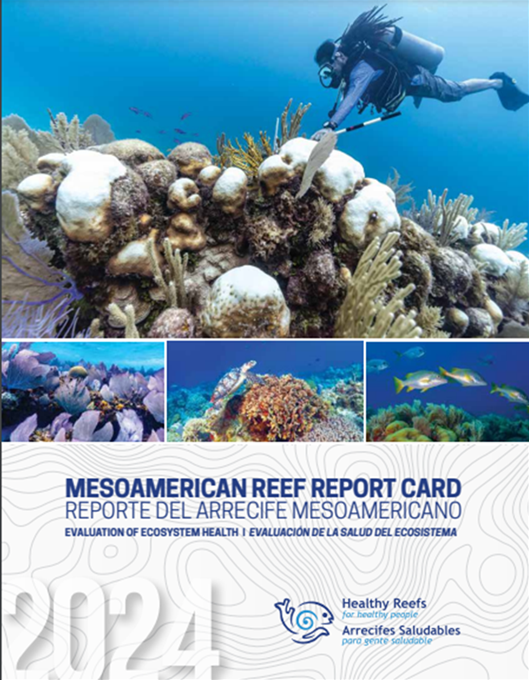
Objective: This project aims to contribute to improving the management of marine resources in the Marine Landscape territories and Guanaja, Bay Islands, and strengthen productive and commercial units by promoting better fishing practices and greater access to financial services. Additionally, financial products are designed to de-risk investments in the fishing sector, such as a parametric insurance, a guarantee fund and concessional loans.
The organization GOAL, who is implementing this project, has provided 22 capacity building workshops within coastal fishing communities and in the following topics: responsible fishing practices, proper handling and processing of fishery products, legal strengthening, business management, loss reduction and market access training. To date, a total of 802 people, representing 298 women and 504 men, benefitted from the training program, which include both fishing associations and artisanal fishers.
Twenty-two business diagnoses of community fishing enterprises and 21 of small tourism operations have been completed, which help identify areas of improvement of each venture.
Collaborating with GOAL and the inputs from fishing associations in the Caribbean coast of Honduras, Willis Towers Watson has designed the parametric insurance strawman to compensate for lost income for small-scale fishers during extreme weather events.
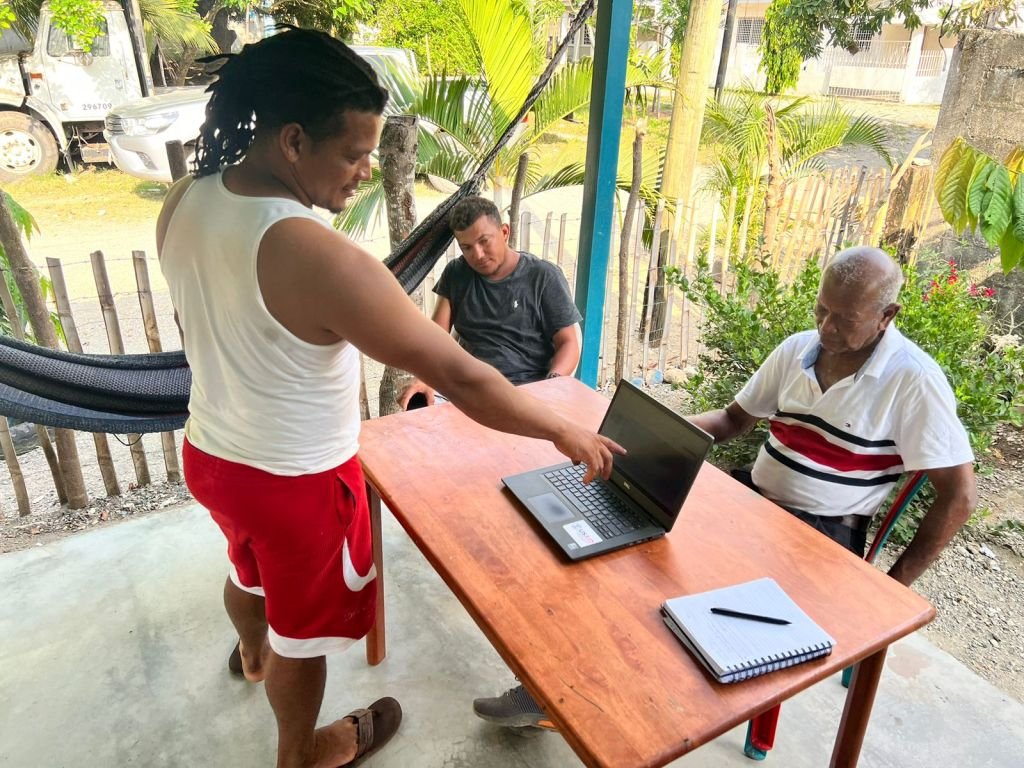
Photo: GOAL
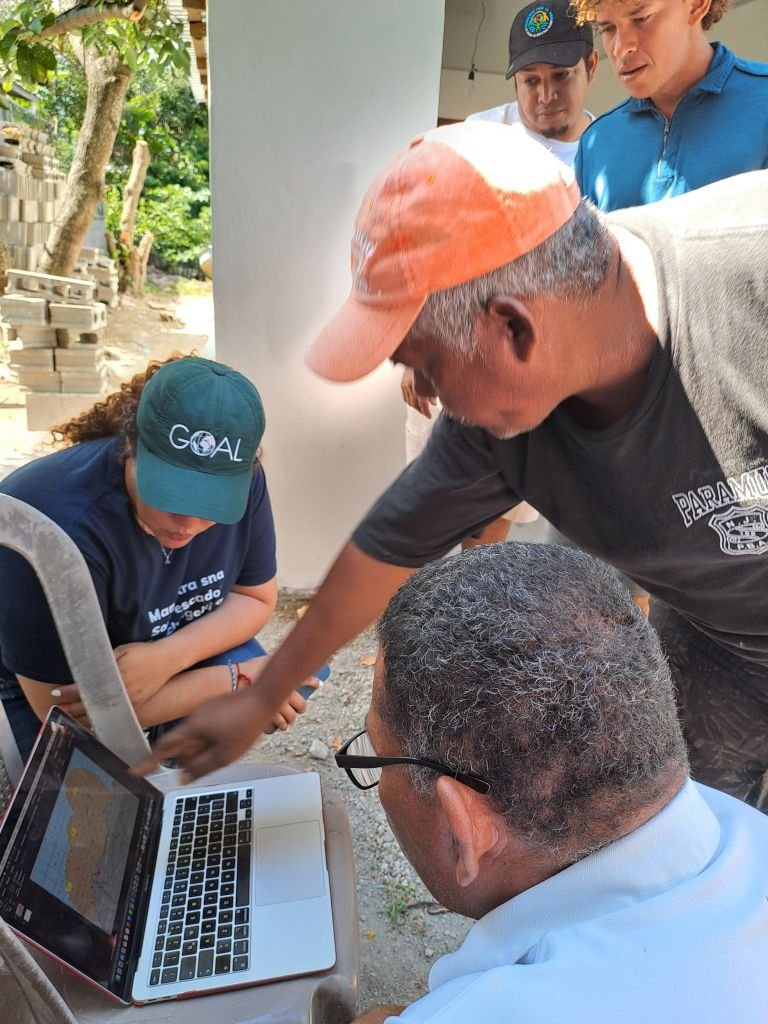
Photo: GOAL
Objective: Develop an online tool to support CMPAs identify financing gaps and train managers and co-managers to use the tool .
The MARFin tool has been finalized and two training sessions for managers and co-managers have been organized. A total of 19 participants from the different CMPAs in the MAR attended the trainings.
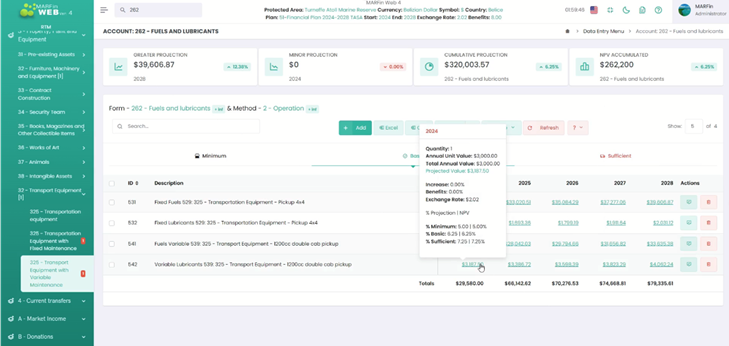
Objective: To strengthen capacities of women- led groups in the Mesoamerican Reef System.
Progress to date:
- Xcal’arte acquired equipment that allowed them to continue their training, virtual meetings, and tag printing for their handcrafted products. Additionally, they purchased materials to create lionfish jewelry in Xcalak, Mexico, which will be sold later.

Photo: Xcal’arte
Objective: To strengthen capacities of women- led groups in the Mesoamerican Reef System.
Progress to date:
- The Comité de Mujeres Cayo Quemado installed a solar energy system in their restaurant, to promote ecotourism in the Caribbean coast of Guatemala.
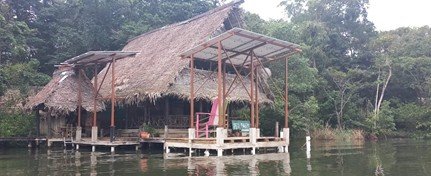
Photo: Comité de Mujeres Cayo Quemado
Objective: To strengthen capacities of women- led groups in the Mesoamerican Reef System.
Progress to date:
- Mujeres BioFauntásticas had their first planning meeting to organize gender, leadership and communication training and to develop their business plan. They purchased a computer and office supplies.
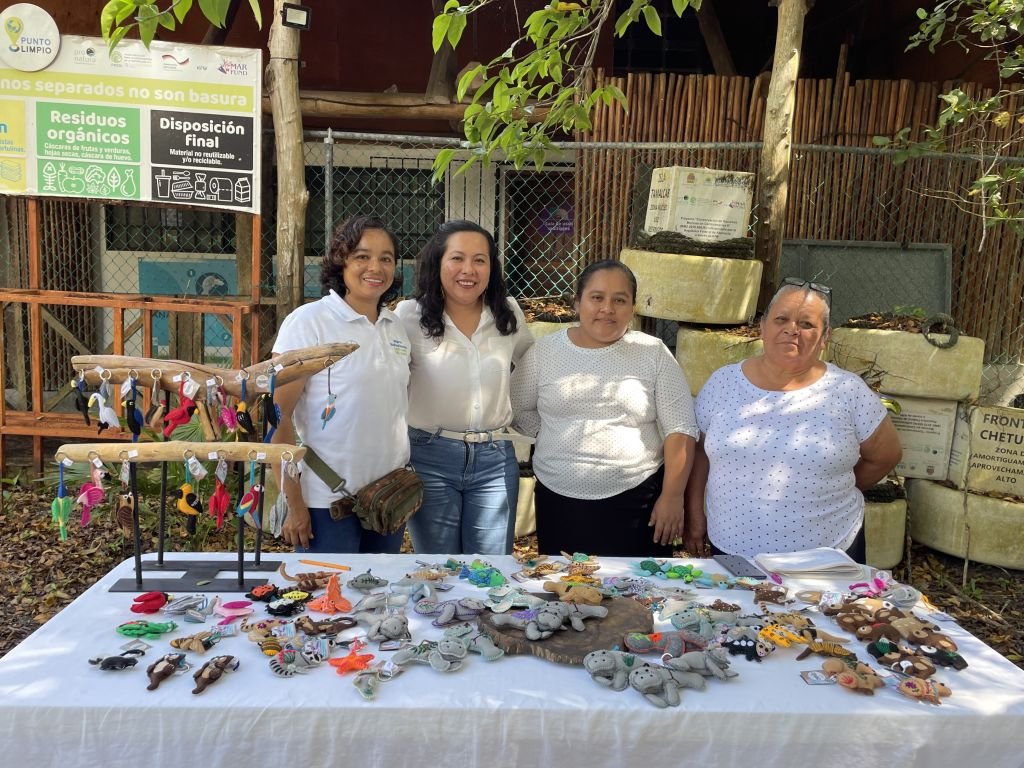
Photo: Judith Morales
Photo: Fundación Albatros
The work carried out in 2024 has been made possible by the support of donors.
We are grateful for their trust and continued generosity.
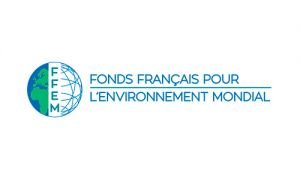

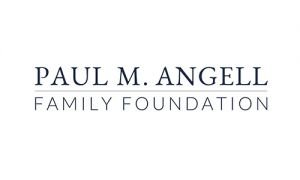
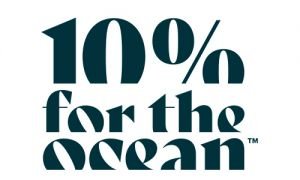

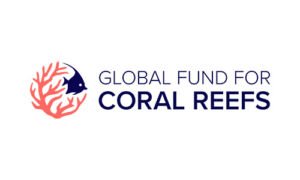
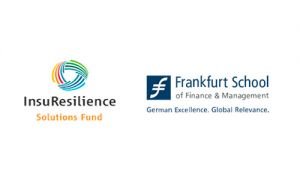
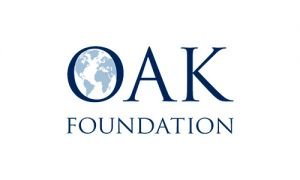
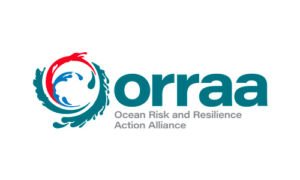
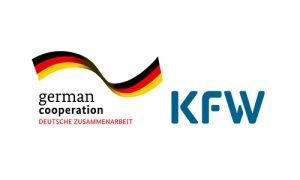


Photo: Gabriela Ochoa/Fundación Albatros
Followers on Facebook
Followers on Instagram
Followers on X
Views on YouTube
Followers on LinkedIn
ENGLISH:
- To defend the ocean’s biodiversity is to defend human well-being
- Mesoamerican Reef Report Card – 2024
- Fishermen from the Gulf of Honduras came together to share their experiences of economic diversification to conserve fisheries
- COP16: A Key Moment for Coral Reef Conservation
- Commitment to the Ocean: MAR Fund at Climate Week
- Strengthening the conservation of coastal marine protected areas in the MAR: MAR Fund announces the launch of the second Phase III call for proposals and the selected proposals from the first call
- Reef response committee meeting for the Caribbean of Guatemala
- MAR+Invest enters the second Phase!
SPANISH:
- Defender la biodiversidad del océano es defender el bienestar humano
- Reporte de Salud del Arrecife Mesoamericano 2024
- Pescadores del Golfo de Honduras se reúnen para compartir sus experiencias de diversificación económica con el fin de conservar las pesquerías
- COP16: Un momento clave para la defensa de los arrecifes de coral
- Compromiso con el Océano: MAR Fund en la Semana del Clima
- Fondo Naturaleza Chile y OCF Mar de Juan Fernández realizan gira técnica a Guatemala para conocer la experiencia de MAR Fund, en el marco del Proyecto BRIDGE
- Fortaleciendo la conservación de áreas protegidas marino-costeras en el SAM: MAR Fund anuncia el lanzamiento de la segunda convocatoria de Fase III y las propuestas seleccionadas en la primera convocatoria
- Comités Coordinadores de Respuesta post-tormenta del Atlántico Hondureño se capacitan para proteger sus arrecifes de coral
- Un vistazo al valor económico del Sistema Arrecifal Mesoamericano en Honduras
- Reunión del comité de respuesta para arrecifes del Caribe de Guatemala
- Restauración de arrecifes de Cozumel para contar con más corales vivos.
- ¡MAR+Invest inicia su segunda fase!
- MAY: Manual of Coral Reefs of the Bay Islands as a tool for environmental education in the Bay Islands Department.
- JUNE: The MAR+Invest Acceleration Programme. Open Call!. Designed to support business solutions that promote the conservation of the Mesoamerican Reef System (MAR).
- JULY: MAR Insurance Programme. An innovative tool for coastal resilience and risk preparedness.
- AUGUST: Are we forgetting our fish spawning aggregations? Institutional amnesia and shifting baselines.
- SEPTEMBER: Cayman Crown: Characterization and Reef Health Changes over time.
- OCTOBER: Sustainable Futures: Income diversification strategies for fishing communities of influence in the Cayman Crown Reef, to protect fish spawning aggregation sites in Belize, Guatemala, and Honduras.
- NOVEMBER: Environmental Education Processes Implemented in Guatemala’s Caribbean as a Management and Conservation Tool.
- DECEMBER: 2024 Report Card on the Health of the Mesoamerican Reef HRI.

Address:
22 avenida 0-59, Zona 15 Vista Hermosa II
Guatemala, C.A. 01015
Phone: +(502) 2369-3188
Phone: +(502) 2369-1978
Email: info@marfund.org
Website: https://marfund.org/

